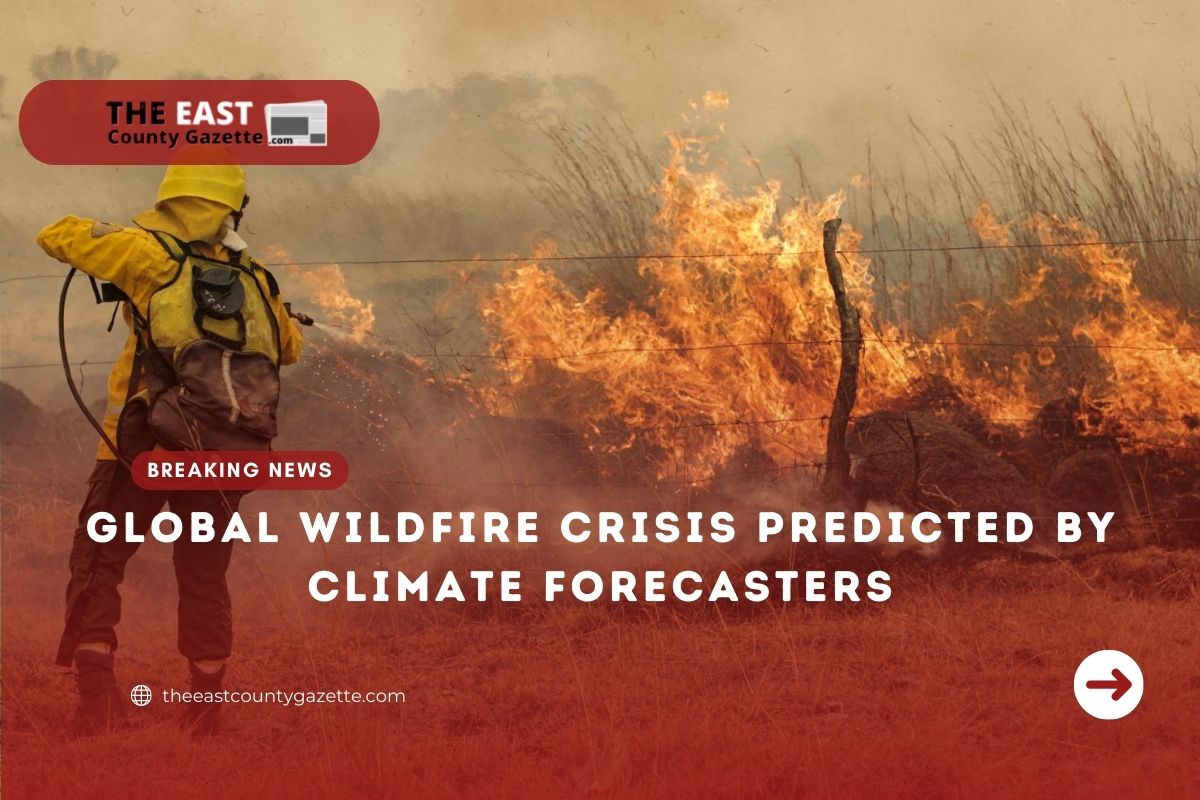The “global wildfire crisis” caused by climate change is predicted to intensify in the next decades, according to a new UN study.
The organization’s environmental authority assessed global wildfire hazards for the first time. There have been several devastating blazes in recent years, especially in the American West, Australia, and the Arctic.
These fires have become ominous emblems of strained human-nature connections, with orange settlements and smoke billowing over injured or dead wildlife.
The UN Environment Program said Wednesday that global warming is transforming landscapes into tinderboxes.
The study involved over 50 experts from six continents and showed that by the end of the century, the worldwide risk of catastrophic fires might grow by up to 57% due to climate change. There will be more fire activity in certain areas and less in others.
Temperatures are increasing and water resources are dwindling due to man-made global warming. The report’s authors advised governments and communities to adequately prepare.
Glynis Humphrey, a fire expert at the University of Cape Town, says governments don’t pay enough attention to fires. Prescribed burns and other ways to suppress wildfires are growing more popular globally, she says. In prosperous nations, public funding still goes to firefighting.
The survey found that brush fires had been worse in places including eastern Australia, western USA, and Canada. Uncontrolled burning is spreading in formerly untouched areas including Russia, northern India, and Tibet. Destruction of savannas by fire has reduced in Sub-Saharan Africa during the last two decades.
While recent catastrophic fires have been worsened by unprecedented warmth and dryness due to climate change, the overall impact on fire dangers is complex and varies by area.
Read More: Social Security Automatically Sends $687 Payments as an Increased COLA of $1,657 Arrives.
Researchers have proven that the devastating heatwave in the Pacific Northwest last year would not have occurred without human-caused global warming. Researchers say climate change is connected to bushfires in Australia and high temperatures in Siberia.
High temperatures and little rain can reduce the number of plants that can be utilized as fuel for flames. Lower humidity can make plants more flammable, contributing to rapid fire spread.
A global increase in intense wildfires is predicted even if governments decrease emissions of heat-trapping gases.
Under a moderate global warming scenario, severe, catastrophic fires might increase by up to one-third by 2050 and up to 52% by 2100. Wildfire dangers may increase by up to 57% by the end of the century if emissions are not decreased.
According to Douglas I. Kelley of the UK Centre for Ecology & Hydrology, the increase in burning will be most pronounced in the Arctic. Northern Russia and North America are already warming faster than the rest of the world. The enormous Arctic fires of 2020 blasted more toxins into the atmosphere than any prior month in 18 years of data collection.
According to Kelley, greater vegetation implies more fuel for wildfires in more temperate portions of the US and Asia.
Experts say the region’s worst drought in at least 1,200 years caused early-season wildfires. The warm, dry weather is predicted to continue until the spring.
The UN has produced a report asking countries to be more proactive in avoiding fires. According to the paper’s calculations, almost 60 cents of every dollar spent combating wildfires goes to urgent firefighting. Less money is spent on preventing fires and helping communities recover, which may help them battle flames better.
Peter Moore, a fire control specialist with the UN Food and Agriculture Organization (FAO), says Portugal’s national fire plan has many lessons to teach after two deadly fires in 2017. Over time, the area’s agriculture has declined, and its poorly kept woodlands have increased, making it very flammable.
“They experienced a series of spectacular and deadly fire occurrences,” Moore says. He said “similar situations are developing” in eastern Australia, western North America, Chile, and elsewhere.
Progress does not automatically increase fire risk. As the population of Africa’s tropical grasslands grows, farmers respond by cultivating and grazing additional area. Because of this, savannas are more spaced, making wildfires less likely. Despite global warming, burned land fell by a fifth between 1998 and 2015.
The University of Cape Town’s Humphrey stated that a lot of African fires are started to clear vegetation and prevent more major and harder to control wildfires Many communities have used this type of land management for years, and the UN research recommends it be included in fire policy formulation.
For Humphrey, fire is “an essential component of our world, but it must be managed.”

